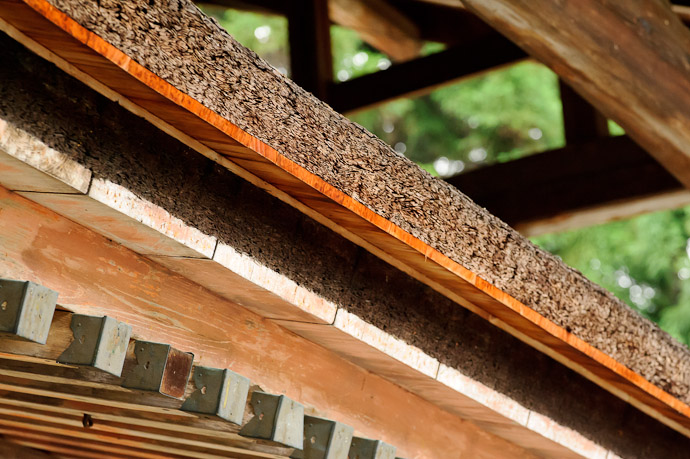
Nikon D700 + Voigtländer 125mm f/2.5 — 1/500 sec, f/5.6, ISO 6400 — map & image data — nearby photos
Sort Of Hard To Pin Down
if you're not familiar with how Shinto shrine roofs are built
In “Exquisite Beauty Growing Like a Weed by the Side of the Road” the other day, I noted that while driving through a sparsely-populated village deep in the mountains of Uji City south-east of Kyoto, we made a stop to check out a local shrine we happened upon. The shrine's entrance gate appeared in yesterday's “Scenes From Rural Japan: Mountain Village in Uji City” as well.
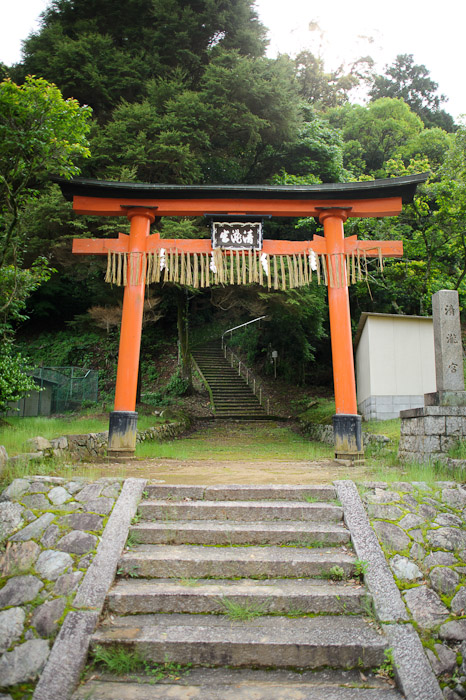
Nikon D700 + Nikkor 24mm f/1.4 — 1/2000 sec, f/1.4, ISO 200 — map & image data — nearby photos
Going Up
Entrance to the Kiyotakiguu Shrine
middle-of-nowhere, Uji City, Kyoto Prefecture, Japan
The shrine has the name Kiyotakiguu (清瀧宮), and is just a small local shrine for the village, like any number of similarly unassuming local shrines and temples that have appeared on this blog (recent ones I can recall offhand include the Himuro shrine, Takanawa Temple, Juge Shrine, Ochiba Shrine, Hiyoshi Shrine, Nitenji Temple, Sokushouji Temple, and Toufuu Shrine).
These unassuming local places are quite different from the large famous shrines and temples like the Kongourinji Temple, Heian Shrine, Sanzen-in Temple, Yoshiminedera, Eikando Temple, Yoshida Shrine, and Nanzen Temple, but each has its own charms, and I enjoy checking them out, the more remote the better.
This one was a two-minutes walk up a winding set of stairs up the side of a mountain...
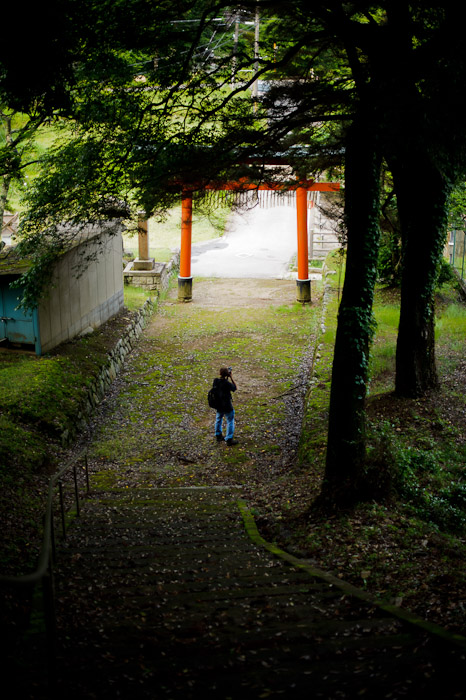
Nikon D700 + Nikkor 50mm f/1.4 — 1/640 sec, f/1.4, ISO 200 — map & image data — nearby photos
From The First Turn
At the left you can see a small shed with blueish doors. Coming from the shed is a track that leads up to the shrine, for some kind of conveyor to bring heavy things up and down...
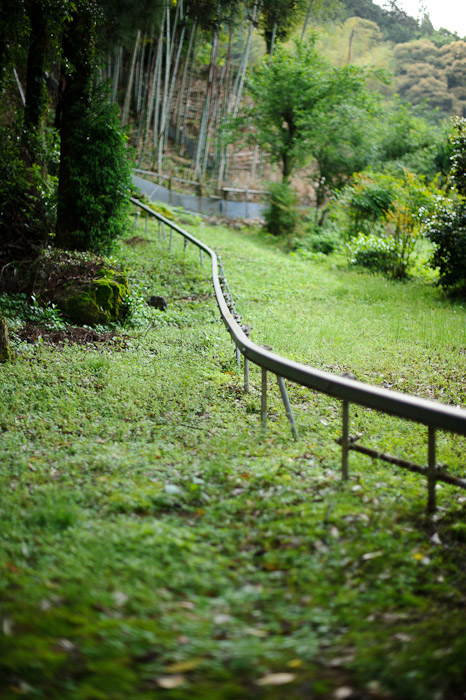
Nikon D700 + Nikkor 50mm f/1.4 — 1/800 sec, f/1.4, ISO 200 — map & image data — nearby photos
Heading Up On Its Own Path
The track is, of course, the answer to the “Bumpy-on-the-Bottom What-am-I? Quiz” from the other day.
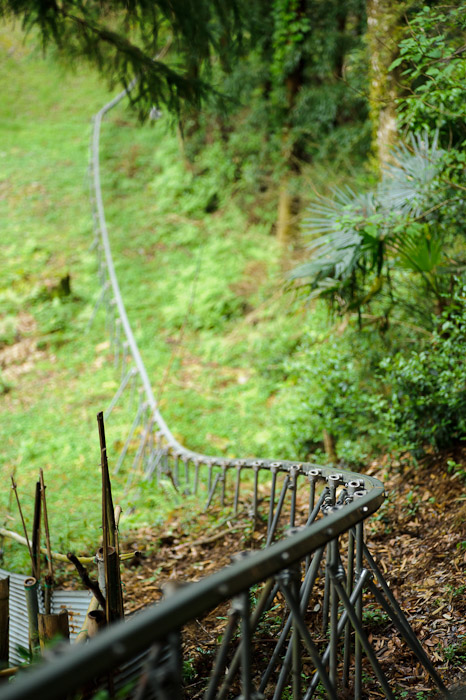
Nikon D700 + Voigtländer 125mm f/2.5 — 1/500 sec, f/2.5, ISO 720 — map & image data — nearby photos
Climbing
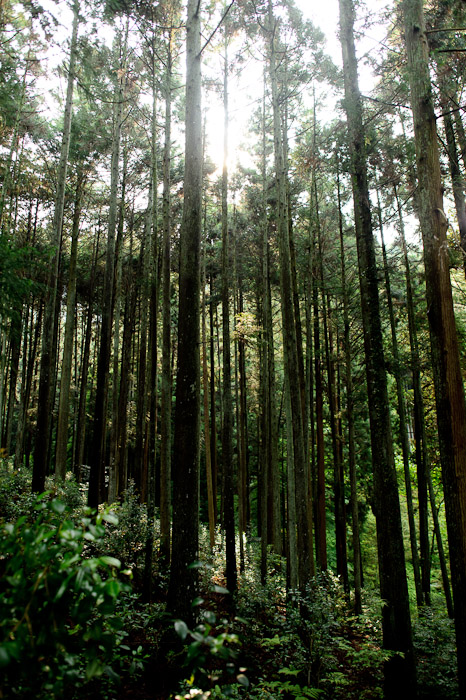
Nikon D700 + Nikkor 24mm f/1.4 — 1/500 sec, f/2.5, ISO 500 — map & image data — nearby photos
Impressive Height
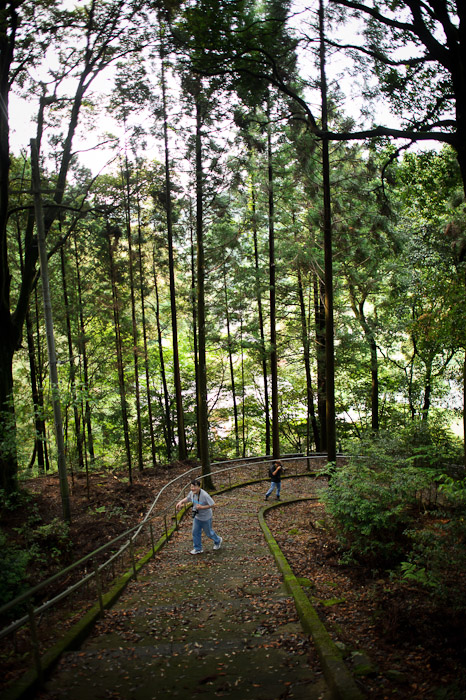
Nikon D700 + Nikkor 24mm f/1.4 — 1/500 sec, f/1.4, ISO 450 — map & image data — nearby photos
Halfway Up
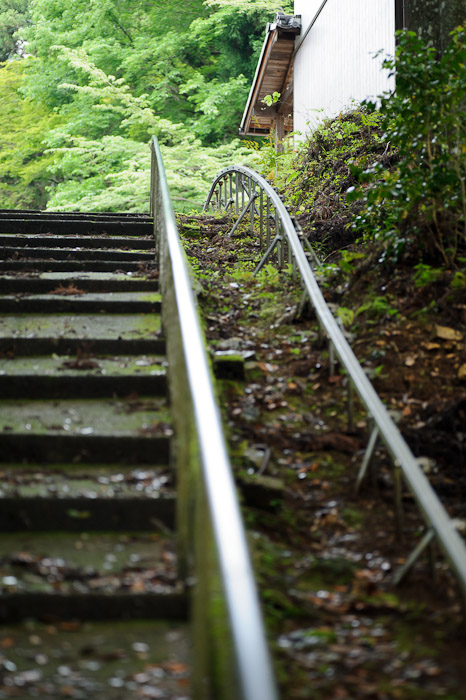
Nikon D700 + Voigtländer 125mm f/2.5 — 1/500 sec, f/2.5, ISO 1100 — map & image data — nearby photos
Approaching the Top
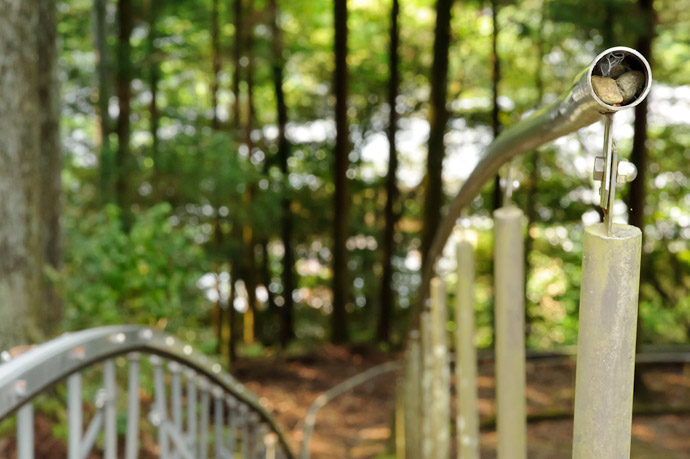
Nikon D700 + Voigtländer 125mm f/2.5 — 1/100 sec, f/16, ISO 6400 — map & image data — nearby photos
End of the Line
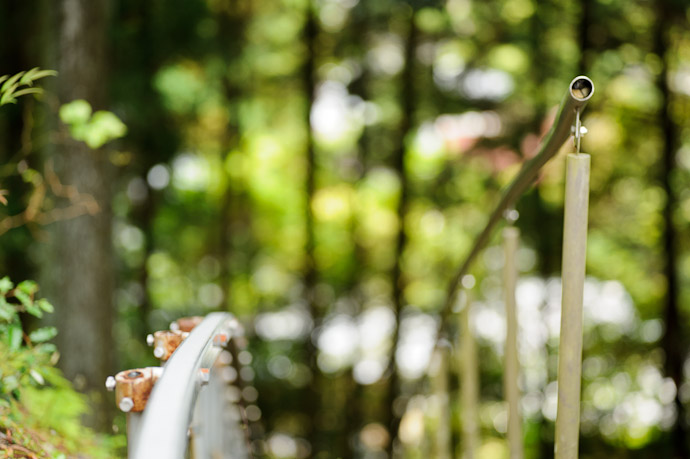
Nikon D700 + Voigtländer 125mm f/2.5 — 1/500 sec, f/2.5, ISO 640 — map & image data — nearby photos
End of the Line
( but at f/2.5 this time )
Once you get up there, you find a small compound with minor buildings on three sides and the main shrine building a bit further up a rise on the fourth side....
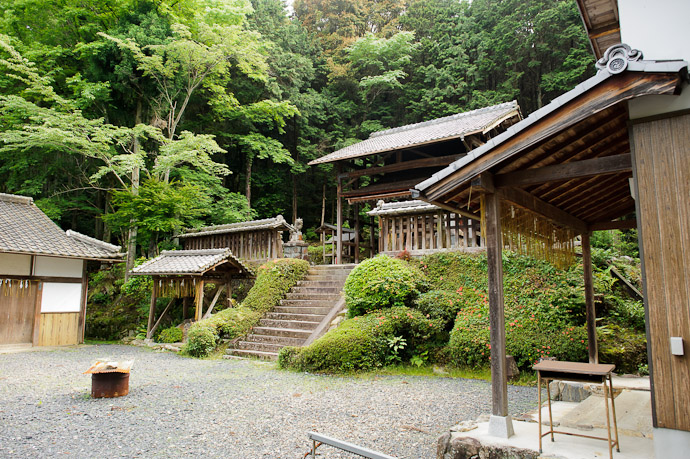
Nikon D700 + Nikkor 24mm f/1.4 — 1/500 sec, f/4.5, ISO 1250 — map & image data — nearby photos
Shrine Compound
Before heading up the stairs to the main shrine, you come across the water basin for ritual purification...
The fence/walls separating the main building from the rest of the compound were interesting, made of wood framing supported by angled stone buttresses, and topped with what must have been a very heavy tile roof....
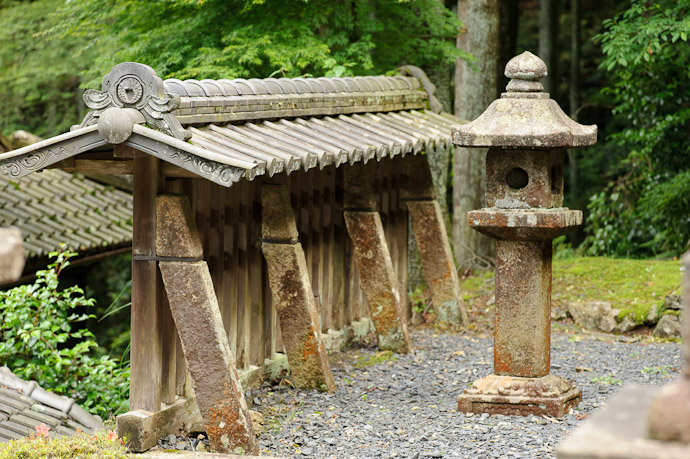
Nikon D700 + Voigtländer 125mm f/2.5 — 1/500 sec, f/4, ISO 1000 — map & image data — nearby photos
Sturdy(?) Wall
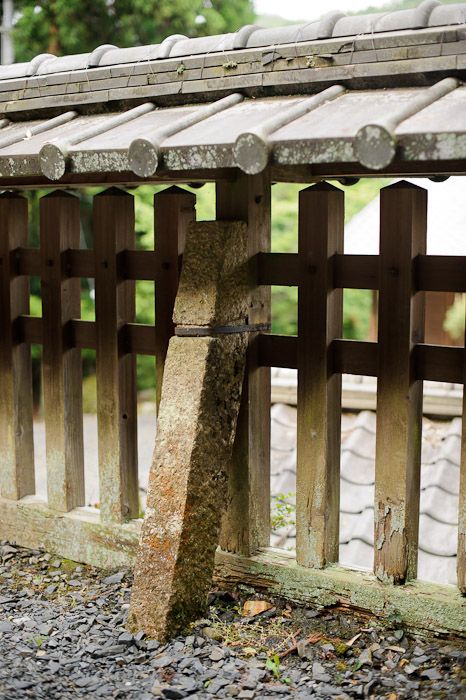
Nikon D700 + Nikkor 50mm f/1.4 — 1/500 sec, f/2.2, ISO 280 — map & image data — nearby photos
Support?
I had the impression that stone was not known for its sheer strength, and I'd worry that these relatively-thin columns would snap off in a sharp earthquake, rather than support the wall as they seem designed to do. I dunno.
The wall's roof tiles were held secure by wire...
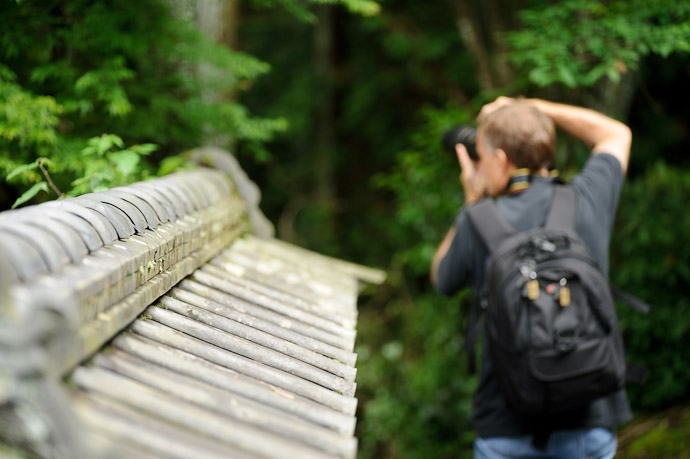
Nikon D700 + Voigtländer 125mm f/2.5 — 1/500 sec, f/2.5, ISO 360 — map & image data — nearby photos
Wired In
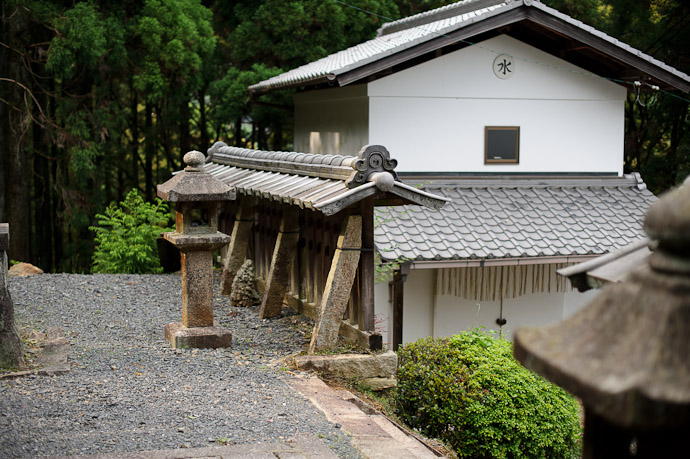
Nikon D700 + Nikkor 50mm f/1.4 — 1/800 sec, f/2.2, ISO 200 — map & image data — nearby photos
Other Side
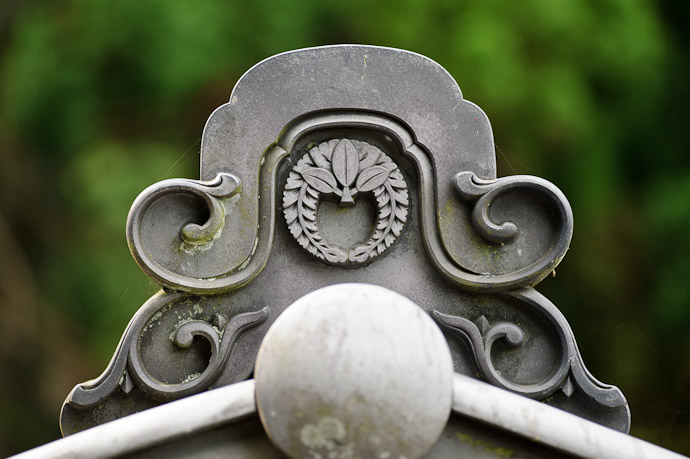
Nikon D700 + Voigtländer 125mm f/2.5 — 1/500 sec, f/2.5, ISO 360 — map & image data — nearby photos
Other Side's Roof Endcap
( I'm sure there's a better word then “endcap”, but I don't know it )
Update: Fr. Graham McDonnell (seen here), who has been a priest in Kyoto for 50-something years, tells me that this is called a kamon-iri onigawara (家紋入り鬼瓦), which I figure literally means “gargoyle with a family crest”. Frankly, this doesn't do anything to help me figure out what to call it in English, but it's good to know the proper term in Japanese.
As is common with many local shrines, the shrine building itself was quite small, perhaps just one small room, though we couldn't tell for sure because it was closed up when we visited (but that didn't thwart an extremely active population of bees coming and going in great numbers. The inside was probably filled with honey.)
Also common with local shrines, the shrine building itself was protected under an enclosing roof. In the shot below, Paul Barr stands under the roof of the shrine, while just behind him the support for the protective structure rises up and out of frame...
The protective structure itself was in questionable shape...
I suspect that local shrines have these protective structures because they're cheaper than replacing the heavily-shingled roof. A rich and famous shrine can afford to replace the roofs from time to time (such as this one), but I suspect it's much more a challenge for a small local place.
But that's just a guess. I'm not sure what to make of this shrine's roof... it looks like it's had some recent repairs...
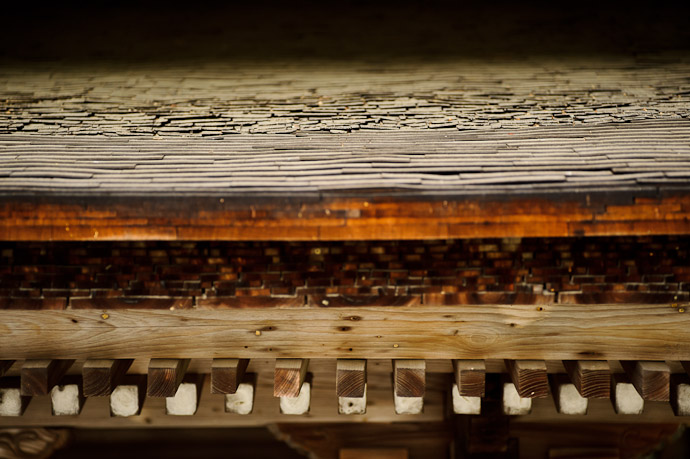
Nikon D700 + Voigtländer 125mm f/2.5 — 1/500 sec, f/2.5, ISO 2500 — map & image data — nearby photos
Shrine-Roof Layers
But one area seemed at the same time both new and old without any particular divide...
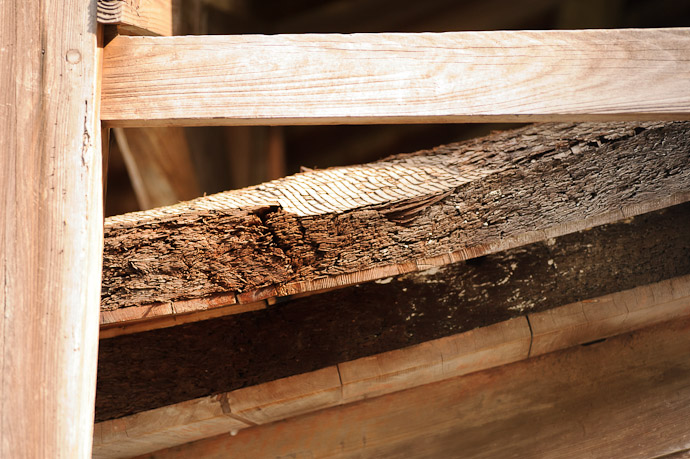
Nikon D700 + Voigtländer 125mm f/2.5 — 1/500 sec, f/2.5, ISO 1600 — map & image data — nearby photos
... while just a bit further up the roof it looked very old...
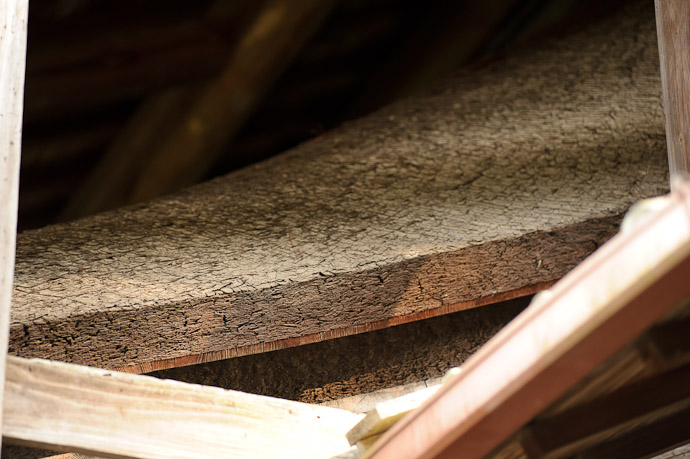
Nikon D700 + Voigtländer 125mm f/2.5 — 1/500 sec, f/2.5, ISO 1400 — map & image data — nearby photos
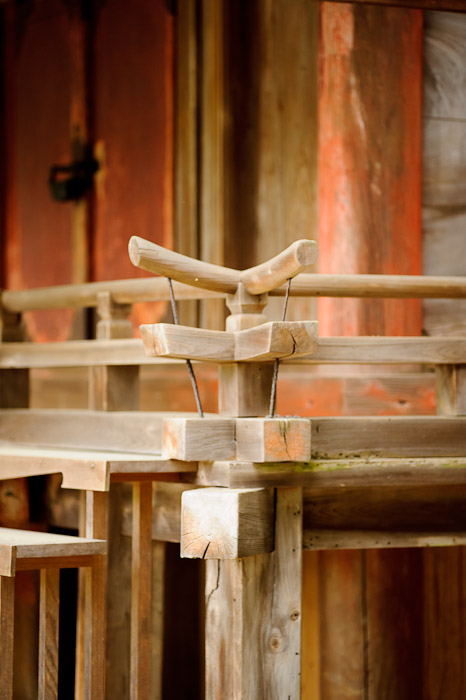
Nikon D700 + Voigtländer 125mm f/2.5 — 1/500 sec, f/2.5, ISO 1800 — map & image data — nearby photos
Railing Detail
One of the other buildings in the compound had an old lock on the door...
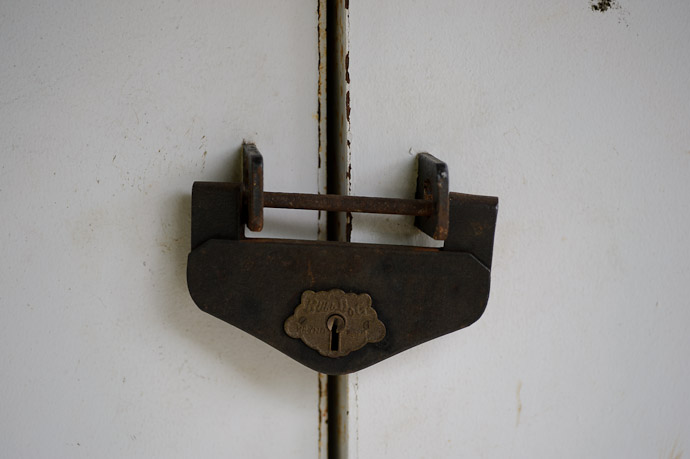
Nikon D700 + Voigtländer 125mm f/2.5 — 1/500 sec, f/2.5, ISO 320 — map & image data — nearby photos
Old(?) Lock
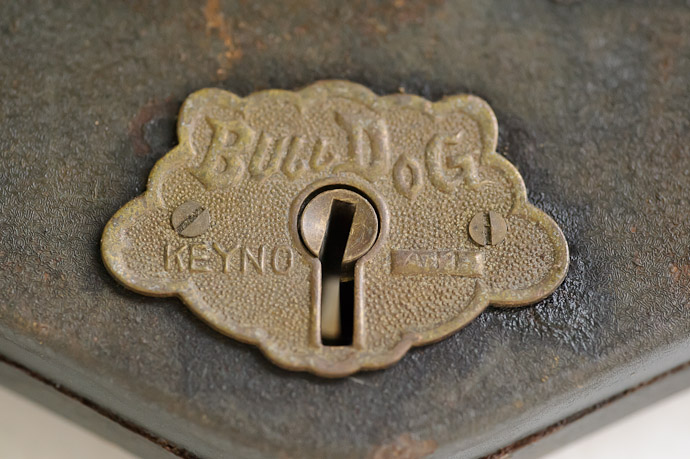
Nikon D700 + Voigtländer 125mm f/2.5 — 1/500 sec, f/4, ISO 5600 — map & image data — nearby photos
Bull Dog
It looks quite old, but they're still for sale, so maybe it's just well weathered.
By the way, since I've answered the one What am I? quiz above, I may as well answer another: the “One Last Towel-Museum What-am-I? Quiz” from two weeks ago is the view looking down through a stack of wire shopping baskets, exactly as the first commenter guessed...
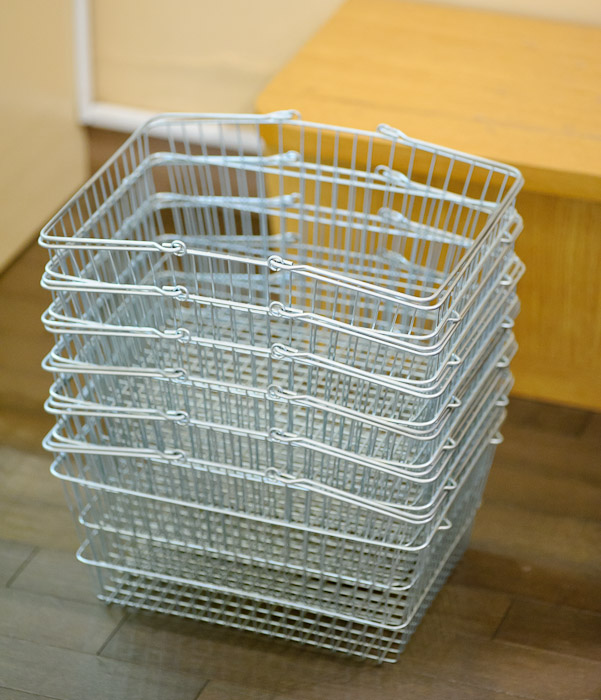
Nikon D700 + Voigtländer 125mm f/2.5 — 1/320 sec, f/2.5, ISO 3600 — map & image data — nearby photos
Stack of Wire Baskets
Posts from the Uji trip are continued here...
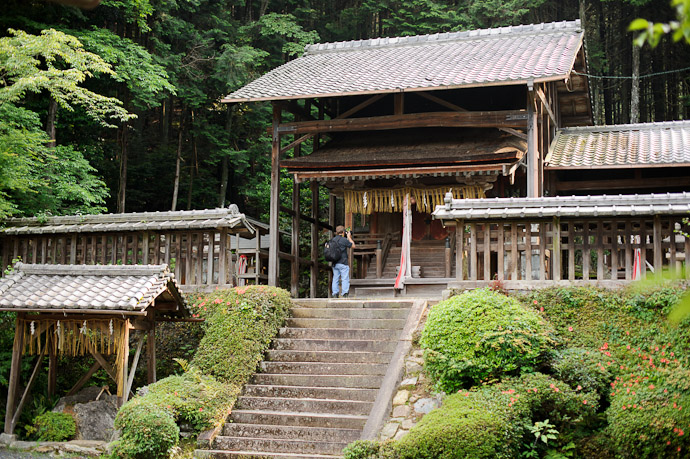
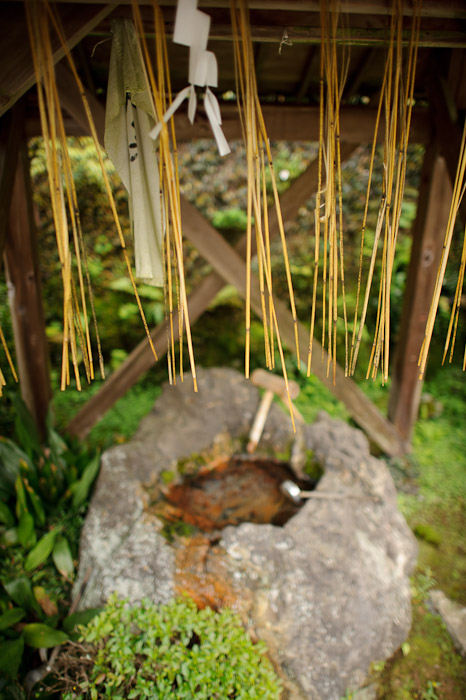
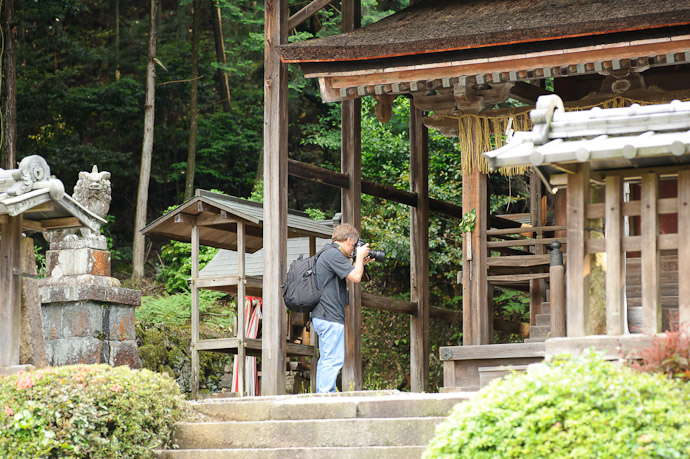
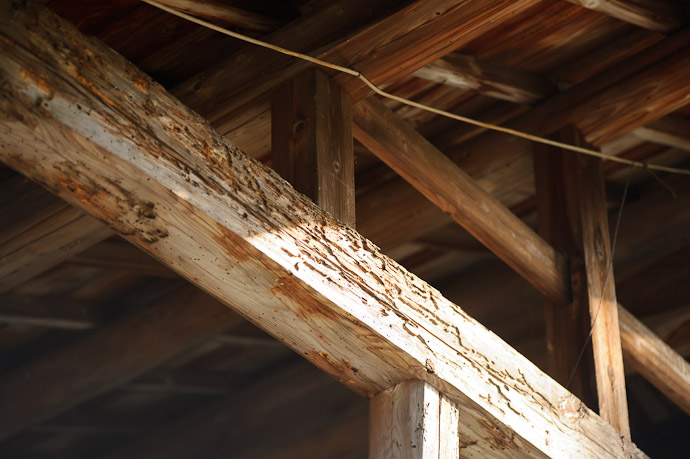
Hi Jeffrey, this was pretty neat to see. I’m a bit curious about the shrines, though. I’m under the impression that in modern-day Japan people use them as more of a cultural site than a religious one. How are these places maintained? Money-wise they accept donations, but that doesn’t seem like it would be enough to keep them running (particularly the smaller ones). Does the government fund them as historical sites? And as far as staffing goes, the shrines are supposed to have a priest/priestess (or multiple) who maintains the grounds, right? But in modern times, who aspires to such a position? Do they still have priests maintaining the shrines and their grounds, or has it become a community (or government) effort?
Or am I underestimating the popularity of Shintoism and Buddhism (not grouped together, but in consideration of their temples) in modern-day Japan?
My understanding is imperfect and perhaps wrong, but but it’s a very vague line between “cultural” and “religious” for many Japanese, one that varies depending on the context. Even on the cultural side, I’d expect many Japanese would still financially support a local shrine or temple. Most (all?) are privately owned, and since they are not taxed (just as religious are not taxed in the US), it can be quite lucrative to be a Buddhist monk or Shinto priest, at least in an area with a large enough population. Visiting the larger popular places, you often see very high-end cars parked in the private parking lot. Smaller places are often owned by a family, passed down from generation to generation, so a son might follow in his father’s footsteps. A community place like in today’s post may well be owned by a community group, but I don’t know. There was no place for a resident priest to live, so perhaps there had not ever been one. The very tiny shrine near my place that closed down a few years ago had no buildings at all… just an altar(?) on a tiny wedge of land. The family that had supported it used to be large generations ago, but had dwindled in the area to one small house, and they just couldn’t support it any more. The priest that came to officiate the closing rite came from the nearby huge Heian Shrine, I think. —Jeffrey
I like the dreamlike/psychedelic quality of “Heading Up On Its Own Path” from the foreground bokeh.
And, I think people in Japan, especially rural Japan, still do a lot to support their local shrine/temple. It’s about community and continuity as much as anything else, I think.
Beautifull!!! your photograph is so beautifull!